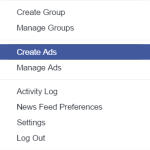A modern customer spends a considerable portion of time using social media, so they often find information about companies, brands, products and services on social websites.
Businesses that do not engage with social media users miss an exceptional opportunity to earn significant ROI on minimal investments of time and money.
Here are a few tips to help you figure out how to use social media to increase sales in an inexpensive and efficient way.
How do I know which social media network has the highest ROI?
There is no universal approach to social media marketing, which is why businesses need to approach each network with a customized strategy.
Some networks work better for communication and brand promotion, while others are great for traffic generation and direct sales.
Three social network sites work particularly well for the hospitality industry: Facebook, Twitter, and Instagram.
1. Facebook
Promoting your business on Facebook is great for business. It allows people to “check in” when visiting a business, share photos of their experience and leave reviews on their business page.
Facebook automatically shares these experiences with the users’ entire network of friends, giving a business massive exposure.
For example, when someone checks into a place, this is what their contacts see: company name, what the business does, where they are located (both address and location pin on the map) and what their user rating is.
Additionally, Facebook has a very efficient advertising platform that allows a business to market themselves to desired demographic groups.
Let’s say you’re a hotel marketing manager who wants to promote the hotel’s wedding venue to engaged couples in your area. You can do so in a few simple steps:
First head over to the upper right corner of the hotel’s business page and click on “Create Ads.”

Select ‘Relationship’ from the drop down menu and add ‘Engaged.’
Choose your budget, check the Ad preview and you’re good to go. Your ad will now be delivered to a narrow group of prospects who are probably on the lookout for the service you’re offering.
2. Twitter
Twitter is very efficient when it comes to creating brand advocates. Twitter users tend to buy from and recommend businesses they follow.
Here is an example of a company that really knows how to get customers to speak out for them:
Mr. & Mrs. Smith are a luxury hotel agency with a strong Twitter presence and a very large number of followers.
They provide extraordinary service that spontaneously inspires their customers to tweet about their experiences.
And some of those customers just happen to be famous personalities who have their own networks of hundreds of thousands of followers:
Twitter is a convenient channel for hoteliers to find people planning to travel to their city, contact them, and offer reservations to them.
For example, here is one tweet where a person is looking for accommodation in NYC:


Just enter a word combination such as [looking for] + [type of service] + [place] and browse through the results.
3. Pinterest
Pinterest sends more traffic to business websites than any other social media network.
Also, “pinned” images are 100 times more viral than Tweets, so businesses that share their brand stories and products visually on pinboards can gain considerable attention.
This pinboard from Hyatt Regency Chicago’s Pinterest profile gives a good insight into how brand storytelling on Pinterest works.
They pin customer reviews, contests, events, staff images, causes they support – everything that helps people get the bigger picture about the company culture and the values they promote.
How do I measure return on investment?
Calculating and tracking return on investment challenges even the most experienced social media marketers.
To get it right, it is important to understand how the process works: consumers are first exposed to ROI-oriented social media content and then referred to the company website where deals actually get closed.
This (and the majority of other) post(s) from Gansevoort Park hotel Facebook page exemplifies this practice.
The hotel shared a photo of one of their rooms and included a short, enticing caption that contains a call to action and a link to their website where prospective guests can book the accommodation.
This being said, a good way to measure ROI is to track the right metrics for the website. These include:
- First Click Attribution – to find out how a user who placed an order first found a site
- Unique Page Views – to monitor the number of different users who visited the web page
- Time Spent Per Visit – to predict the user’s likelihood to buy
- Bounce Rate – to see how many people quickly leave the website, presumably because it doesn’t interest them
- Conversion Rates – to calculate how effective the website is
Social media marketing has the potential to replace a portion of budget businesses invest into advertising and PR.
With a minimal investment of one hour a day, companies have a powerful tool at their disposal that can efficiently engage customers and drive sales – as long as their social campaigns stay focused on ROI.
———-
This article was contributed by Taylor Moore, a freelance marketing writer interested mainly in small business and retail. Follow her on Twitter.












